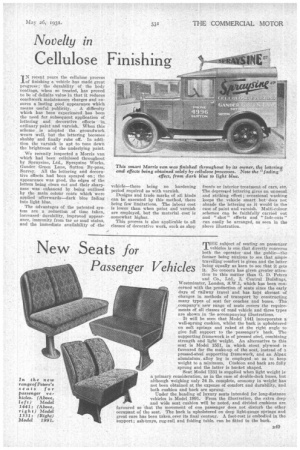New
Page 67

If you've noticed an error in this article please click here to report it so we can fix it.
Seats for
Passenger Vehicles
THE subject of seating on passenger vehicles is one that directly concerns both the operator and the public—the
former being anxious to see that ample travelling comfort is given and the latter being equally as keen to see that it gets
• it. No concern has given greater attention to this matter than G. D. Peters
and Co., Ltd., 3, Central Buildings, Westminster, London, S.W.]., which has been concerned with the production of seats since the early days of railway travel " and has kept abreast of changes in methods of transport by constructing many types of seat for coaches and buses. The
,company's new range of seats covers the requirements of all classes of road vehicle and three types are shown in '-he accompanying illustrations.
It will be seen that Model 1441 incorporates a well-sprung cushion, whilst the back is upholstered on soft springs and raked at the right angle to give full support to the passenger's back. The supporting framework is of pressed steel, combining strength and light weight. An alternative to this seat is Model 1551, in which stout plywood is favoured for the make-up of the seat, instead of a pressed-steel supporting framework, and an Alpax aluminium -alloy leg is employed so as to keep weight to a minimum. Cushion and back are fully sprung and the latter is bucket shaped.
Seat Model 1331 is supplied when tight weight is a primary consideration, as in the case of double-deck buses, but although weighing only 34 lb. complete, economy in weight has not been obtained at the expense of comfort and durability, and both cushion and back are sprung.
Under the heading of luxury seats intended for long-distance vehicles is Model 1991. From the illustration, the extra deep and wide seat cushion will be noted, and divided cushions are favoured so that the movement of one passenger does not disturb the other occupant of the seat. The back is upholstered on deep light-gauge springs and great care has been taken over its final contour. A foot-rest is embodied in the support; ash-trays, rug-rail and folding table, can be fitted to the back.




































































































